Querying Data in Apache SolrApache Solr provides the facility of querying data, too, in addition to storing data. Solr gives a certain parameters using which users can query the stored data in it. In the below-given table, we have listed down the various query parameters available in Apache Solr.
We can see all the above parameters as options to query Solr documents. Go to the homepage of Apache Solr, and on the left-hand side of the page, click on the Query. We will be redirected to the fields for the parameters of a query. 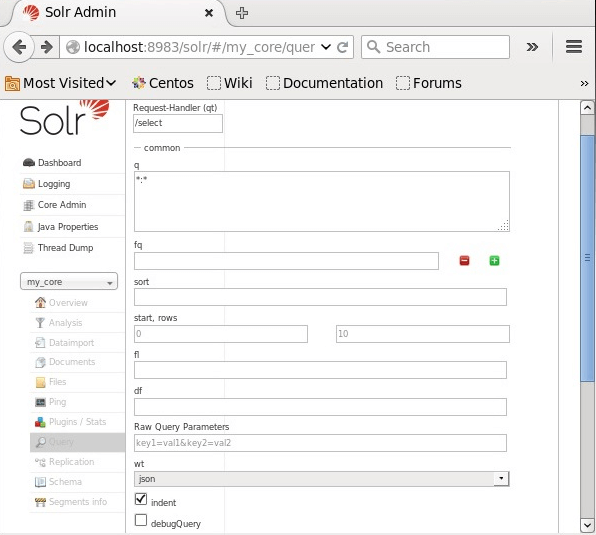
Retrieving the RecordsLet's suppose we have three different records in the core named as my_core. To get detailed data from the selected core, we have to pass the name-value pairs of the fields for the soecified document. E.g, if we want to get the record with the value of the field id, we have to pass the name and value pair of the field as - Id:001 as value for the q parameter and run the query command. 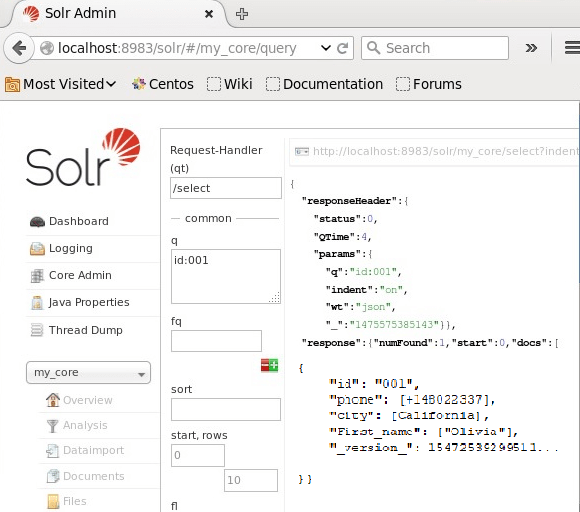
Similarly, we can fetch all the records from an index by passing *:* as a value to the q, as displayed in the below-given screenshot. 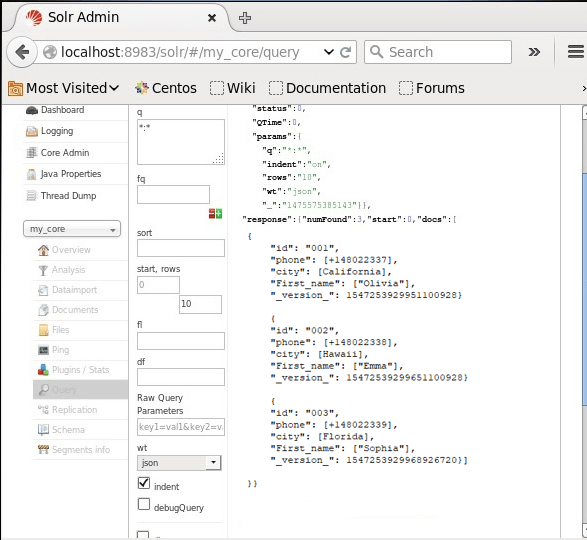
We can get the records from the secondary record by passing two as a value to the start parameter, as displayed in the below-given screenshot. 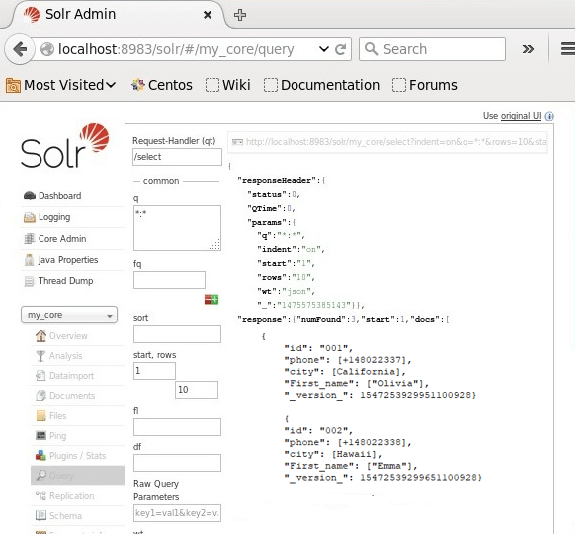
Restricting the Number of RecordsWe can restrict the quantity of records by defining a value in the parameter rows. E.g., we can restrict the total number of records in the Query to 2, bypassing the value two into the parameter rows, as displayed in the given screenshot below. 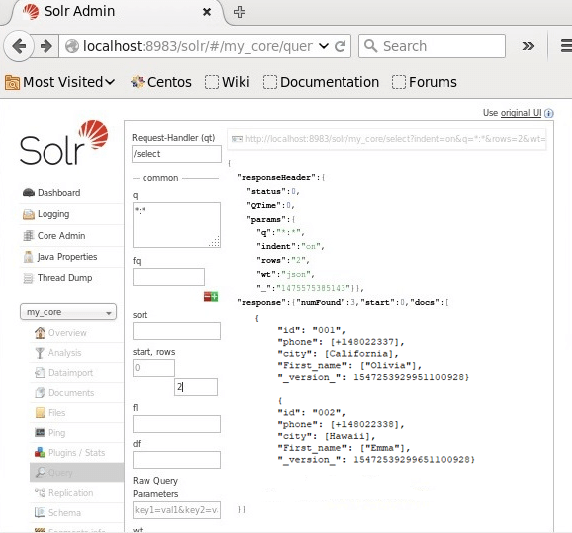
Response Writer TypeWe can fetch the required document type response by choosing one from the provided data of the wt parameter. 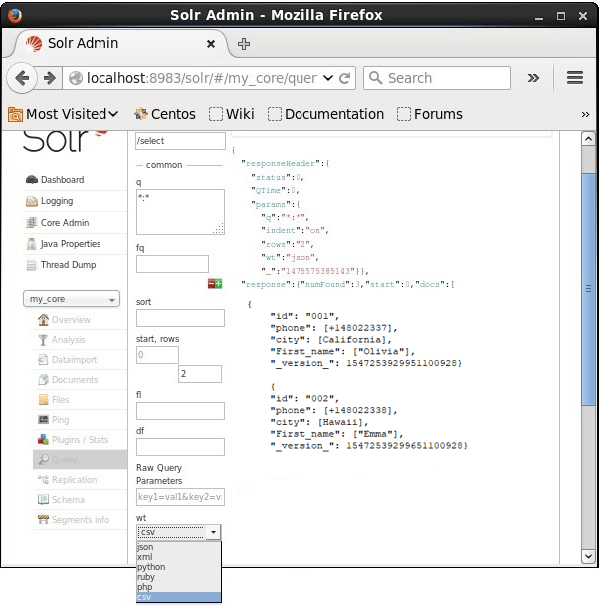
We have selected the .csv format to get the response from the Apache Solr in the above image. List of the FieldsIn case we want particular fields in the output documents, we need to pass the list of the required fields, separated by commas, as a value to the property fl. In the example below, we retrieving the fields - id, phone, and first_name. 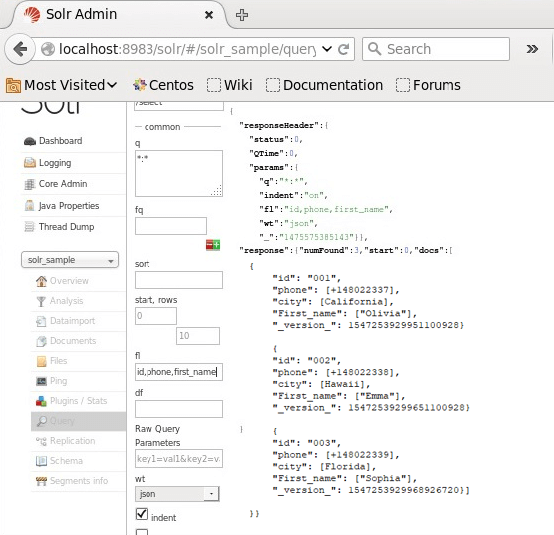
Spell-checkWe'll see to use Solr's spell-check search component. Automated spell-checking is a core search feature that most users expect to work without having to think. When it comes to spell-checking, there are four general scenarios you need to consider:
From the above given scenarios, we can get two key requirements of a spell-checking solution:
Spell-check exampleWe can use the http command-line utility for running code listings to query Apache Solr with the misspelled term atmosphere, as seen in this listing. Query Solr with a misspelled query term "atmosphear." Query Response
Next TopicApache Solr Faceting
|
 For Videos Join Our Youtube Channel: Join Now
For Videos Join Our Youtube Channel: Join Now
Feedback
- Send your Feedback to [email protected]
Help Others, Please Share










